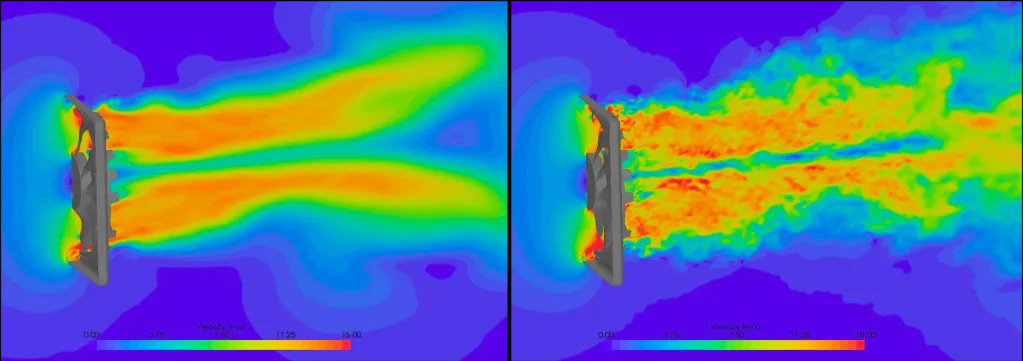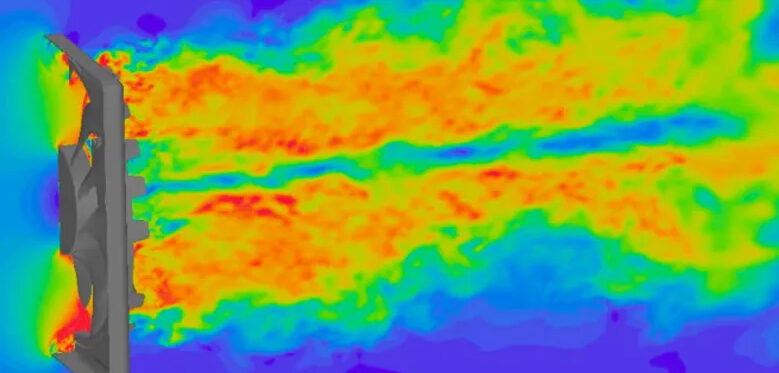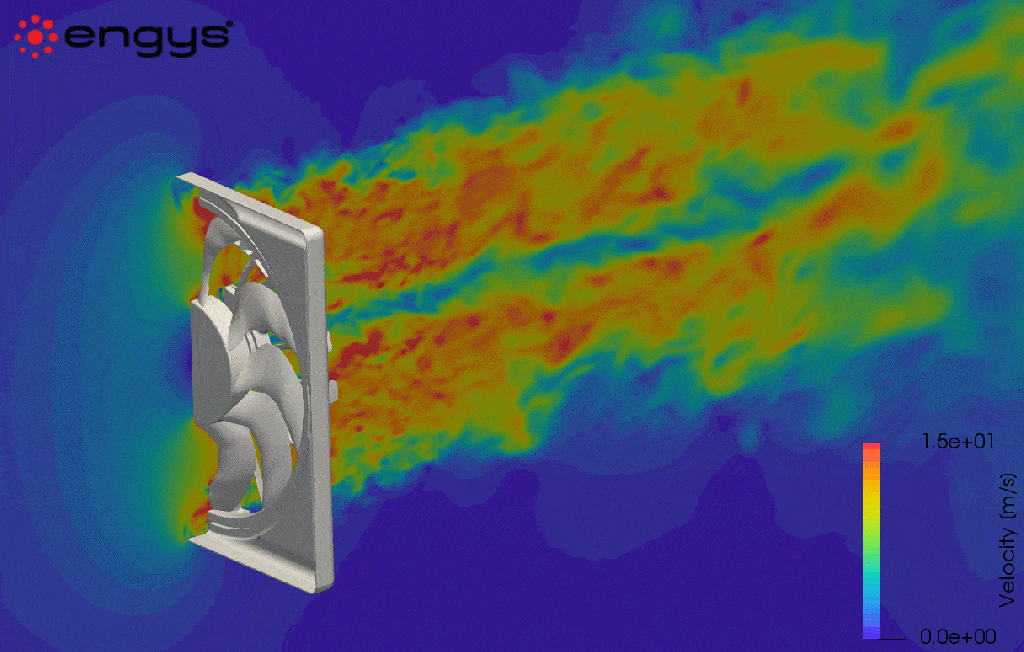Automotive cooling fans are among the major noise sources within a vehicle and can generate up to 85dBA at certain frequencies. With this in mind, reducing fan noise is a key target for automotive manufacturers.
Italy-based open-source CFD specialist Engys was approached by Johnson Electric, a global manufacturer of motion products that wanted to assess CFD software that could accurately simulate the aeroacoustics of its cooling fans.
The project involved two computational approaches:
- An unsteady RANS (uRANS) simulation to analyze tonal noise. This had to solve within 12 hours of CPU time on a 128-core computer;
- A detached eddy simulation (DES) analysis to examine broadband noise, which would be validated against experimental results.
Simulating the aeroacoustics of turbulent flows is a considerable computational challenge. The source of the noise, as well as the propagation of the acoustic waves, needs to be accurately modeled.
“Establishing a computationally efficient aeroacoustic design chain is very challenging,” explained Paolo Geremia, a director at Engys Italy. “You need to capture the intricacies of all the noise sources, which requires accurate turbulent models, detailed meshes and finite time steps. But this is not compatible with minimizing CPU time.”
The company used its Helxy software to split up the source part of the noise from the propagation part. “It uses a simulation approach based on acoustic analogy. In this way, you can achieve the best balance between accuracy and computational efficiency,” noted Geremia.

A CAD model of the fan was provided, which included the geometry of the anechoic chamber, shroud and fan motor maquette. A sensitivity study was then undertaken to establish the most influential parameters and their relative sensitivities. This helped to define the optimum mesh, time step and numerical scheme for each approach.
For the uRANS and DES simulations, an extrude mesh algorithm, developed by Engys, was used. The algorithm extrudes prismatic cells from walls using a hexa-dominant mesh. Consequently, it captures the detailed characteristics of the boundary layer while maintaining a smooth transition to the far field.
“The latest version of our extrude algorithm ensures high quality and full coverage of the boundary conditions. This is essential for turbomachinery applications,” highlighted Geremia. “It strikes a good balance between quality, accuracy and run time, making it our most efficient mesher. It’s capable of achieving 20-30% faster turnaround times compared with previous versions.”
The extrude algorithm utilizes a top-down approach, meshing all the volumes down to the surface. It then creates the mesh for the surface and finally the near wall layers. This process is fully automated; all the user needs is the geometry file and the configuration file and the mesher takes care of the rest.
The case setup for each simulation is detailed below.
As fans operate at the low-Mach number level, the flow through them can be accurately represented by incompressible flow solvers. The CAA noise propagation method was also employed.
As expected, the velocity results show that the DES simulation is more accurate at capturing eddy currents within the fan’s wake. Due to its numerical methods, the uRANS simulation tends to smooth out these turbulent fluctuations.

For sound pressure level, Johnson Electric was interested in the low-frequency range up to 1kHz for the uRANS approach. Within this region the simulated results accurately match the peaks of tonal noise of the experimental results. However, the quality of the broadband noise decays after 1kHz. The DES simulation closely follows the experimental results of broadband noise at these higher frequencies.

“The open-source nature of Helxy was the key to achieving these efficient run times,” said Geremia. “By optimizing clusters to fully exploit processing power, we can run multiple cases simultaneously. This means we can run complex simulations more accurately, quickly and efficiently.”
Further case studies of complex CFD challenges can be found on the Engys website: https://blog.engys.com/



